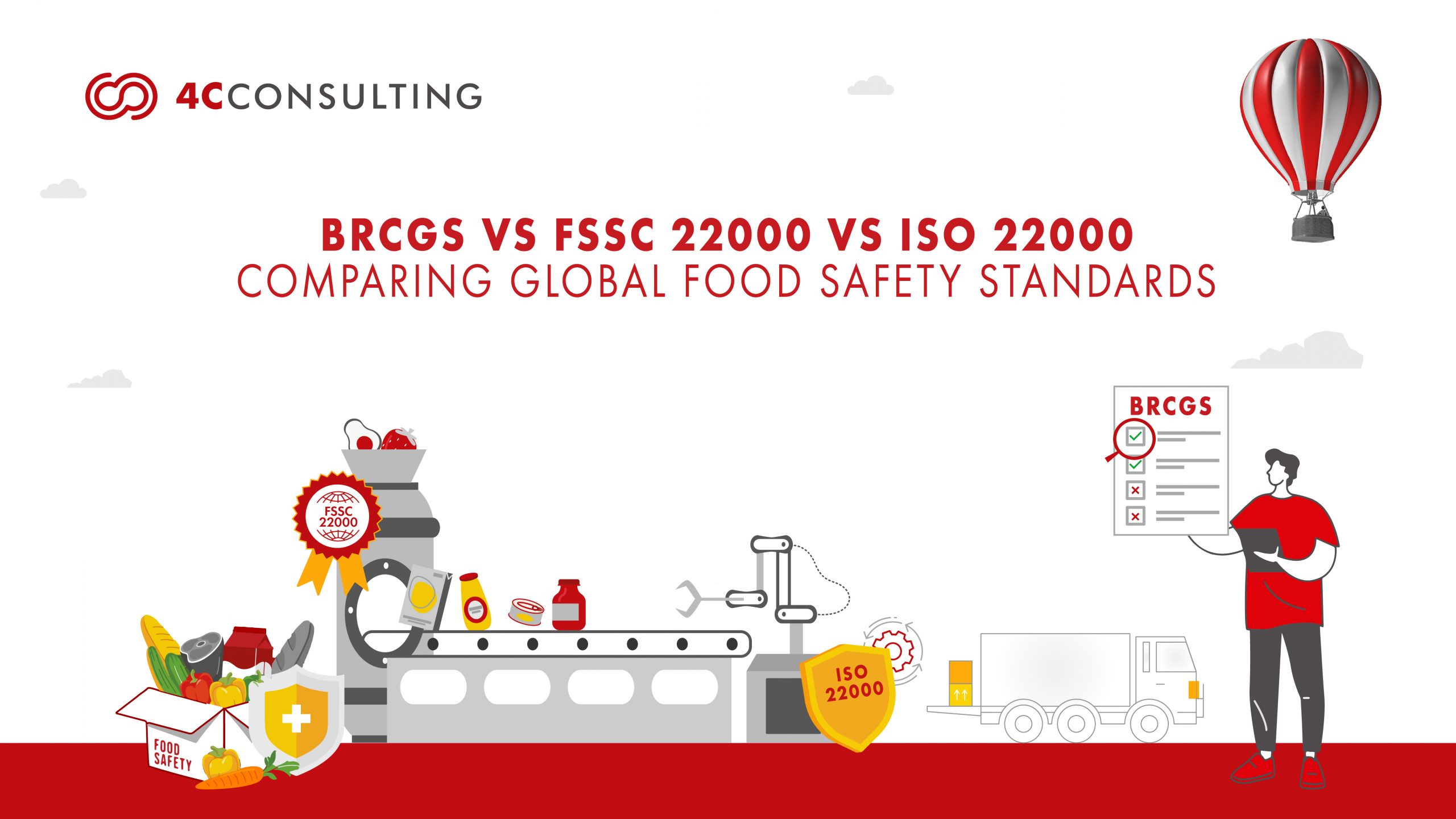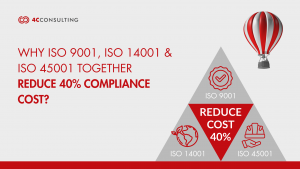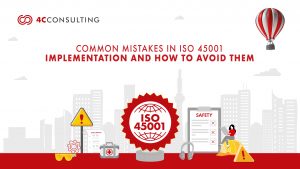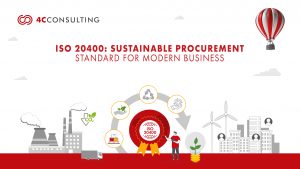BRCGS vs FSSC 22000 vs ISO 22000: Comparing Global Food Safety Standards
14th Oct, 2025In a global food industry where one contamination incident can halt exports overnight, food safety standards are no longer optional they are a competitive necessity. Governments, retailers and international buyers now demand verifiable food safety certification that ensures every stage of the supply chain from raw materials to finished products meets consistent quality and hygiene benchmarks.
Among the global food safety standards, ISO 22000, FSSC 22000 and BRCGS remain the three most trusted frameworks recognized by regulators and the Global Food Safety Initiative (GFSI). Each represents a structured food safety management system (FSMS) designed to prevent hazards, reduce recalls and assure customers of product integrity.
This blog explores the differences between FSSC 22000 vs ISO 22000 vs BRCGS certification, clarifies how each standard applies to different segments of the food industry and helps organizations identify which system aligns best with their operational, regulatory and export requirements.
.
Key Global Food Safety Certifications and Their Frameworks
Over the years, several food safety certification standards have emerged to help organizations demonstrate compliance with international food safety expectations. Among these, ISO 22000, FSSC 22000 and BRCGS are the most widely recognized and often requested by global retailers, regulators and buyers. Each serves a distinct purpose but shares the common goal of ensuring food products are consistently safe, legal and of high quality.
- ISO 22000 (Foundation of Food Safety Management Systems): Developed by the International Organization for Standardization, ISO 22000 defines the structure for a Food Safety Management System (FSMS) based on HACCP principles and risk-based thinking. It integrates easily with other ISO systems such as ISO 9001 and ISO 14001, making it ideal for companies seeking an all-in-one quality and food safety framework.
- FSSC 22000 (GFSI-Recognized Food Safety Certification Scheme): The FSSC 22000 certification builds on ISO 22000 by adding prerequisite programs (PRPs) such as ISO/TS 22002 and additional scheme-specific requirements demanded by the Global Food Safety Initiative (GFSI). It is widely adopted by food manufacturers, processors and packaging industries supplying international brands.
- BRCGS (Retail-Driven Global Food Safety and Quality Standard): Originating from the British Retail Consortium, BRCGS certification (formerly the BRC Global Standard) focuses on product integrity, legality and customer protection. It emphasizes on-site audits, supplier approval and traceability making it particularly valuable for exporters supplying retail and FMCG supply chains.
Understanding these frameworks helps organizations choose the right system based on their market reach, product complexity and regulatory obligations. The following table provides a detailed comparison of BRCGS vs FSSC 22000 vs ISO 22000, highlighting their scope, governance and practical differences.
.
Identify the Right Food Safety Standard for Your Business.
.
Detailed Comparison of Global Food Safety Certifications: BRCGS Vs FSSC 22000 vs ISO 22000.
| Criteria | ISO 22000 | FSSC 22000 | BRCGS |
| Framework Origin | Developed by ISO as a global Food Safety Management System (FSMS) standard. | Managed by the Foundation FSSC 22000, combining ISO 22000, ISO/TS 22002 and extra clauses. | Introduced by the British Retail Consortium (BRCGS) to ensure supplier and retailer assurance. |
| Recognition | Internationally accepted; not GFSI-recognized alone. | GFSI-recognized and trusted by global manufacturers. | GFSI-recognized, widely used by retailers and FMCG brands. |
| Core Objective | Create a unified FSMS using HACCP and risk-based management. | Integrate ISO 22000 with PRPs for complete food safety assurance. | Strengthen product safety, legality and quality through on-site audits. |
| Scope of Application | Applicable across the full food chain from production to packaging. | Focused on food manufacturing, processing, logistics and packaging. | Designed for manufacturers, retailers and distributors. |
| Key Requirements | Based on HACCP and ISO management structure. | ISO 22000 + PRPs + FSSC-specific clauses on food fraud & defence. | Nine clauses on management, HACCP, site standards and product control. |
| Audit & Frequency | 3-year cycle with annual surveillance. | 3-year certification with yearly reviews. | Annual on-site third-party audit required. |
| Prerequisite Programs (PRPs) | Organization-defined hygiene and process controls. | Mandatory ISO/TS 22002 PRPs for manufacturing and packaging. | Established GMP and hygiene programs tailored to site conditions. |
| Documentation Level | Moderate scalable and flexible. | Detailed – requires documented PRPs and control evidence. | Extensive emphasizes traceability and audit-ready records. |
| Integration with ISO Standards | Easily integrates with ISO 9001, ISO 14001 & ISO 45001. | Built on ISO 22000; aligns with other ISO frameworks. | Independent system but complements ISO-based QMS/EMS. |
| Industry Relevance | Universal suitable for all food chain operators. | Ideal for global food, feed and packaging producers. | Favoured by FMCG, retail and private-label manufacturers. |
| Global Acceptance | Recognized in 190+ countries by ISO members. | Accepted worldwide as a GFSI-certified scheme. | Prominent in Europe, Asia and the Americas. |
| Cost & Effort | Moderate suitable for SMEs or integrated systems. | Structured requires detailed implementation. | Varies by site and audit scope. |
| Certification Validity | 3 years with annual surveillance. | 3 years with mandatory audits. | Annual recertification required. |
| Best Suited For | Organizations seeking a flexible, ISO-aligned FSMS. | Exporters needing GFSI-recognized certification. | Retailers and manufacturers focusing on brand assurance. |
.
How to Choose the Right Food Safety Certification for Your Organization?
Choosing the right food safety certification is a strategic decision that connects compliance with business growth. The right framework should strengthen your system, enhance buyer confidence and align with long-term market goals. Each standard ISO 22000, FSSC 22000 and BRCGS supports a specific stage of organizational maturity.
- Clarify Your Business Goal: Every certification journey starts with defining purpose whether it’s systemizing hygiene controls, building export credibility, or earning retailer trust. ISO 22000 helps establish process discipline, while FSSC 22000 extends this structure to meet global regulatory expectations. A regional spice manufacturer, for instance, adopted ISO 22000 to standardize traceability and later upgraded to FSSC 22000 when expanding exports to Europe combining operational consistency with market access.
- Align with Buyer and Retailer Expectations: Global retailers and procurement chains often specify GFSI recognized certifications such as FSSC 22000 or BRCGS as supplier prerequisites. Aligning with these expectations ensures audit readiness and positions your business as a preferred partner. A ready-to-eat meal supplier to UK supermarkets, for example, achieved BRCGS certification to meet retailer audits and secure long-term private-label contracts demonstrating that the right certification can directly influence market continuity.
- Match Certification Depth with Product Risk: Product sensitivity and process complexity define how stringent your controls must be. High-risk sectors such as dairy, frozen foods and meat require FSSC 22000, while low-risk operations like packaging or dry ingredients can sustain compliance under ISO 22000. A cold-storage logistics provider implemented FSSC 22000 to manage temperature-critical hazards and assure global clients of consistent control an essential step for perishable supply chains.
- Consider Export and Supply Chain Reach: Organizations serving multiple geographies or export markets must prioritize globally accepted certifications. FSSC 22000 carries GFSI recognition, enabling seamless acceptance by international regulators and importers, whereas BRCGS is widely trusted within the FMCG and retail ecosystem. An Indian confectionery exporter gained FSSC 22000 to reduce inspection delays and strengthen market entry across the Middle East proving its relevance for cross-border operations.
- Integrate with Existing Management Systems: If your organization already follows ISO-based frameworks such as ISO 9001, ISO 14001, or ISO 45001, integrating ISO 22000 or FSSC 22000 offers greater control and audit efficiency. This synergy minimizes documentation overlap and improves traceability. A multi-site packaging company integrated ISO 22000 with ISO 9001, resulting in unified audits, streamlined supplier evaluations and stronger process governance.
- Reflect Brand and Market Positioning: Certification should mirror how your brand engages with customers. BRCGS reinforces trust for consumer-facing or private-label brands, FSSC 22000 ensures recognition across global networks and ISO 22000 builds governance within domestic supply chains. A sauce manufacturer catering to FMCG brands adopted BRCGS certification to highlight its product integrity and strengthen brand protection across retail markets.
- Plan for Future Scalability: Select a framework that evolves as your business grows. Starting with ISO 22000 establishes the foundation, which can later scale into FSSC 22000 or BRCGS depending on export or retail expansion. A nutraceutical startup followed this path implementing ISO 22000 to formalize processes and upgrading to FSSC 22000 as it entered overseas markets ensuring that compliance grew in parallel with business maturity.
.
Benefits of Implementing Food Safety Certifications
- Robust Food Safety and Hygiene Management: Implementing ISO 22000, FSSC 22000, or BRCGS creates a structured, preventive framework to manage food safety hazards. It establishes clear hygiene protocols, sanitation schedules and monitoring controls across the supply chain. This proactive system minimizes contamination risks, prevents product recalls and strengthens consumer confidence. Over time, safety becomes a built-in culture rather than a one-time compliance goal.
- Strong Regulatory and Global Compliance: Food safety certifications align business operations with recognized standards like FSSAI, Codex Alimentarius and GFSI. They provide documented procedures, traceability mechanisms and validation systems that simplify regulatory and buyer audits. Organizations stay audit-ready year-round, ensuring quick market access and legal conformity. Compliance shifts from reactive correction to continuous assurance.
- Streamlined Operations and Cost Efficiency: By defining responsibilities and standardizing workflows, food safety frameworks reduce duplication, material waste and process errors. They promote lean operations and data-based decision-making, improving productivity across departments. Continuous monitoring and corrective action systems drive efficiency and cost control. This balance between quality and optimization directly supports profitability.
- Enhanced Brand Credibility and Consumer Trust: Achieving globally recognized certification demonstrates your organization’s commitment to safety, quality and transparency. Certified brands are trusted more by retailers, importers and end consumers giving a measurable competitive edge. Consistent quality performance builds loyalty and long-term business relationships. Ultimately, it turns compliance into a powerful marketing advantage.
- Improved Supplier and Supply Chain Control: Food safety certification frameworks extend beyond internal operations to strengthen supplier oversight. They introduce structured supplier qualification, performance evaluation and traceability systems. Each material and input is verified against defined safety parameters, reducing dependency risks. The outcome is consistent quality and reliability across the entire supply chain ecosystem.
- Empowered and Competent Workforce: Structured training under these systems enhances employee awareness and accountability. Teams learn to identify hazards early, follow standardized procedures and maintain documentation discipline. Empowered employees take ownership of food safety goals, creating a culture of shared responsibility. This competence translates into fewer errors and higher operational maturity.
- Access to Global Markets and Business Growth: Certifications like FSSC 22000 and BRCGS are recognized by major retailers and regulatory bodies worldwide. They simplify export approvals, accelerate contract sign-offs and improve credibility with international partners. Businesses gain new market opportunities and sustained revenue growth through globally accepted compliance. Certification becomes not just a requirement, but a gateway to expansion and reputation building.
.
Choosing between ISO 22000, FSSC 22000 and BRCGS certification depends on your organization’s maturity, market presence and customer requirements. While ISO 22000 establishes a strong foundation for food safety and process discipline, FSSC 22000 expands this framework into a globally recognized GFSI-approved system ideal for exporters and manufacturers. BRCGS, on the other hand, provides retail-driven assurance focused on product integrity, brand protection and supplier trust. Thus, all three frameworks drive the same outcome consistent food safety, regulatory compliance and enhanced consumer confidence enabling organizations to build reputation, open new markets and sustain long-term business growth.
.
How 4C Consulting Helps You Choose the Right Food Safety Certification?
4C Consulting enables organizations to achieve global food safety compliance with confidence through a structured, implementation-driven approach. With over 18+ years of experience, 400+ FSMS implementations and 2,000+ hours of food safety consulting, we help businesses identify the right certification framework based on their operations, markets and buyer expectations. Our IRCA-certified auditors and industry experts guide you from gap assessment to documentation, training and audit readiness, ensuring seamless certification and measurable system improvement. 4C Consulting ensures your organization achieves faster compliance, stronger brand trust and sustained food safety performance. Get a 1-hour Free Food Safety Standard Consultation with our experts and begin your certification journey with confidence.

Frequently Asked Questions:
ISO 22000 is the foundational Food Safety Management System (FSMS) standard developed by ISO, focusing on risk-based food safety control using HACCP principles. FSSC 22000 builds on ISO 22000 by adding prerequisite programs (PRPs) and GFSI-specific requirements, making it globally recognized and preferred by international retailers and manufacturers.
ISO 22000 provides a management system approach to food safety applicable across the supply chain, whereas BRCGS (British Retail Consortium Global Standard) is retail-driven, emphasizing product integrity, site hygiene and traceability. BRCGS certification involves rigorous on-site audits and is often a prerequisite for supplying retail and FMCG brands.
No. ISO 22000 is an international voluntary certification that defines a structured Food Safety Management System, while FSSAI is an Indian regulatory authority that mandates compliance with national food safety laws. FSSAI ensures legal licensing, whereas ISO 22000 ensures systematic global compliance.
While not legally mandatory, many international retailers and buyers require GFSI-recognized standards such as BRCGS or FSSC 22000 as part of supplier approval. Holding BRCGS certification helps exporters demonstrate credibility, compliance and product safety assurance, giving them a competitive edge in global markets.
BRCGS certification is valid for one year and must be renewed annually through an on-site third-party audit. Continuous compliance, internal reviews and corrective actions are essential to maintain certification status and buyer confidence.






